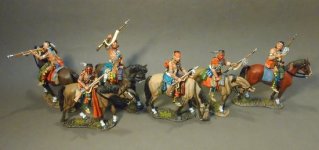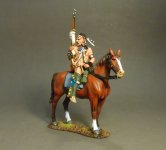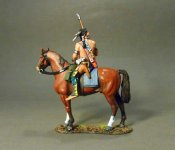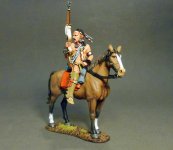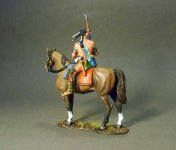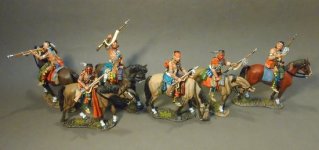THE BATTLE OF THE PLAINS OF ABRAHAM 1759
The 35th Regiment of Foot, were one of the main British units involved in the siege and massacre at Fort William Henry, during the French and Indian War.
Following heavy bombardment and siege operations that progressively neared the fort's walls, the garrison was forced to surrender on August 8th when it became apparent that General Daniel Webb, the commander at Fort Edward, was not sending any relief.
The terms of surrender were that the British and their camp followers would be allowed to withdraw, under French escort, to Fort Edward, with the full honours of war, on condition that they refrain from participation in the war for 18 months. They were allowed to keep their muskets but no ammunition, and a single symbolic cannon. In addition, British authorities were to release French prisoners within three months.
The next morning, even before the British column began to form up for the march to Fort Edward, the Indians renewed attacks on the largely defenceless British. At 5 am, Indians entered huts in the fort housing wounded British who were supposed to be under the care of French doctors, and killed and scalped them. Monro complained that the terms of capitulation had in essence been violated already, but his contingent was forced to surrender some of its baggage in order to even be able to begin the march. As they marched off, they were harassed by the swarming Indians, who snatched at them, grabbing for weapons and clothing, and pulling away with force those that resisted their actions, including many of the women, children, and black servants. As the last of the men left the encampment, a war whoop sounded, and warriors seized a number of men at the rear of the column.
While Montcalm and other French officers tried to stop these attacks, others did not, and explicitly refused further protection to the British. At this point, the column dissolved, as some prisoners tried to escape the Indian onslaught, while others actively tried to defend themselves. Massachusetts Colonel Joseph Frye reported that he was stripped of much of his clothing and repeatedly threatened. He fled into the woods, and did not reach Fort Edward until August 12, three days later.
Estimates of the numbers captured, wounded or killed varied widely. Ian Steele has compiled estimates ranging from 200 to 1,500.His detailed reconstruction of the action and its aftermath indicates that the final tally of missing and dead ranges from 69 to 184, at most 7.5% of the 2,308 who surrendered.
Atrocities described in accounts of the massacre include the killing and scalping of sick and wounded individuals, and the digging up graves to take additional trophies from those who died of wounds or disease during the siege. As a result, many Indians who participated in the action may have contracted smallpox, which they carried back to their communities
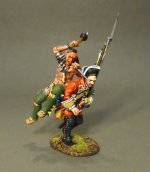 QB-44
QB-44
BATTLE OF THE PLAINS OF ABRAHAM, 13th September 1759,
British, 35th Regiment of Foot, Woodland Indian Attacking British Line Infantry #1
(1pc)
THE SEVEN YEARS WAR
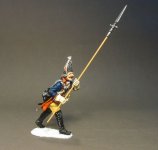
)
LEUT-11
THE SEVEN YEARS WAR, THE BATTLE OF LEUTHEN 1757
ARMY OF FREDERICK THE GREAT
PRUSSIAN SERGEANT,
(1pc)
THE TOWN OF OLD YANGSHUO, 1899.
Yangshuo is a popular tourist county and city near Guilin, Guangxi. The town is surrounded by mountains, winding rivers and beautiful scenery.
The Li River runs from Guilin to Yangshuo and is the centerpiece of any trip to northeastern Guangxi Province. The gorgeous Karst peaks give you surprises at each bend of the river trip. Water buffalo patrol the fields, peasants work in rice paddies, school kids and fisherman float by on bamboo rafts. With its breathtaking scenery and taste of a life far removed from the concrete metropolis, the scenery along the river has become one of China's top tourist destinations.
Cormorant fishing is a traditional way of life on the Li River. This method of fishing has been in existence for hundreds of years.
The cormorants are trained to dive into the river among the school of fish that live in the clear water. After catching a fish the birds return to the boat where the fisherman removes the fish from the bird. The bird is prevented from swallowing the fish by a ring that is placed around the neck of the bird. The bird is rewarded for its work by its owner.
The birds usually fish much better at night than during the day.
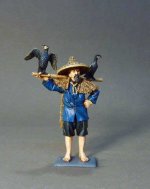 YANG-02
YANG-02
THE TOWN OF OLD YANGSHUO, 1899
CORMORANT FISHERMAN ,
(1pc)
PLEASE CONTACT YOUR LOCAL DEALER FOR MORE INFORMATION
